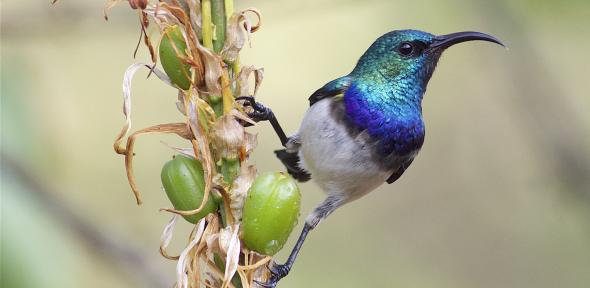
Submitted by Administrator on Tue, 02/04/2019 - 09:10
Perching birds, ranging from sparrows, tits and jays to the South African White-bellied Sunbird, form the largest and most diverse group of living birds. With over 6,000 species belonging to 143 families, the passerines, as they are technically known, have had astonishing evolutionary and geographical success. Within the last 45 million years they have spread out around the world. Now, for the first time the evolutionary tree of all major groups of perching birds has been mapped out in a study involving Daniel Field of the Department of Earth Sciences in Cambridge and led by Carl Oliveros and Brant Faircloth of Louisiana State University.
The authors present a new, detailed family tree of this amazing radiation. By integrating the tree with information from the fossil record of perching birds, they generate a comprehensive picture of how and when passerine diversity originated. Field and his colleagues estimate that the most recent common ancestor of living passerines lived around 45 million years ago. And, the subsequent evolutionary history of passerines was characterised by multiple pulses of elevated diversification rates.
“In addition to inferring how these species are related, our in-depth study found that changes in global temperature or colonization of new continents were not the sole drivers of passerine diversification, as previously suggested. Instead, our results indicate more complex mechanisms were at play to spark bursts of passerine speciation around the globe,” said lead author Oliveros, a postdoctoral researcher in the Department of Biological Sciences at LSU.
And as Daniel Field adds “Our study exemplifies the value of integrating information from Earth’s geological history alongside cutting edge DNA sequencing techniques to understand the links between global change and avian evolution.”
This study was published today in PNAS and is the first publication from OpenWings, a research project supported by the National Science Foundation whose goal is to reconstruct the evolutionary history of all bird species. “This study is an exciting prelude to the types of analyses we can do for all bird families and all bird species, moving into the future” Oliveros said.
Additional Links:
Earth history and the passerine superradiation, PNAS: http://www.pnas.org/cgi/doi/10.1073/pnas.1813206116
OpenWings: http://www.openwings.org/
